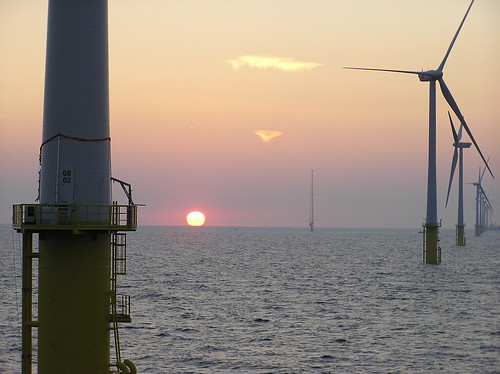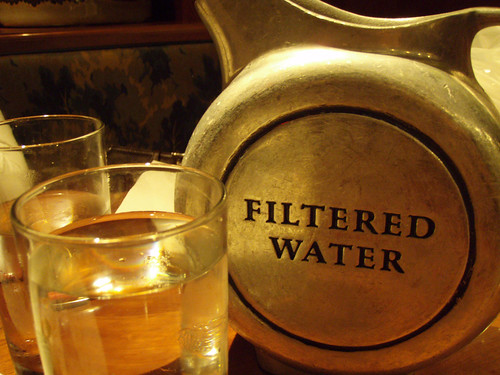 The farm is a 36 turbine, 200 million Euro project built on the initiative of the Dutch government and managed by NoordzeeWind, a joint venture between Nuon and Shell Oil.
The farm is a 36 turbine, 200 million Euro project built on the initiative of the Dutch government and managed by NoordzeeWind, a joint venture between Nuon and Shell Oil.The Planet Green documentary explained how these turbines were set up. They were built in pieces and transported by truck to the coast. From there, they shipped them on giant cargo ships to the sea, where they had to take great care in making sure all the pieces fit perfectly. One wrong move, and the entire turbine would have to be sent back to shore to get fixed.
According to its Wikipedia article, the farm produces a total of 108MW of power, enough to provide 100,000 households with energy.
Since the Offshore Wind Farm near Egmond aan Zee, many other North Sea windfarms have been constructed near the Netherlands, most recently the Princess Amalia Wind Farm (also near Egmond aan Zee) built by Enoco energy, a Dutch energy company, and Econcern, a European company that provides sustainable energy solutions.
After a little more digging (or rather, more link-clicking on Wikipedia), I learned that the United Kingdom is actually the world's leading generator of offshore wind power - makes sense, since space is generally an issue for small island countries. One of the offshore wind farms in the UK, the Lynn and Inner Dowsing Wind Farm, is the world's largest, generating 194MW, enough to power 130,000 homes.
It's great to see energy companies in European countries invest in offshore wind farms. While it may make sea transport a little more difficult, it's an excellent solution to the problem of space, size, and noise issues that wind power is sometimes associated with, and they may be options to consider for many other coastal countries.
Source of images: Flickr Creative Commons









